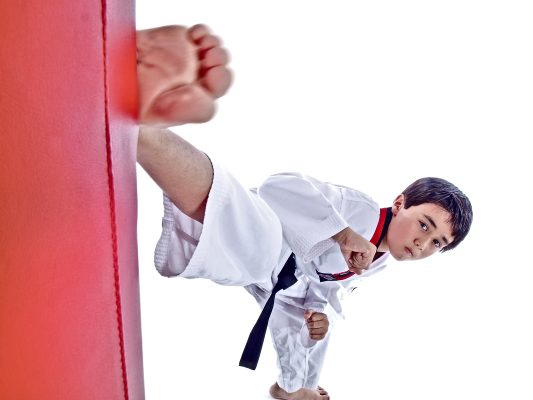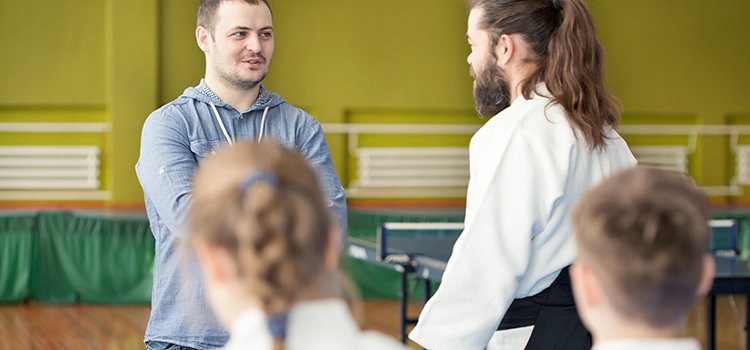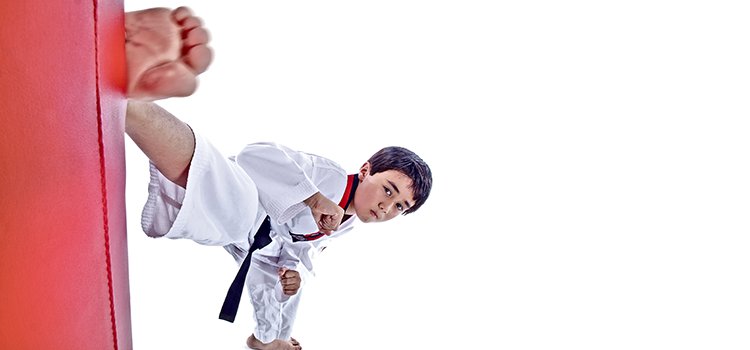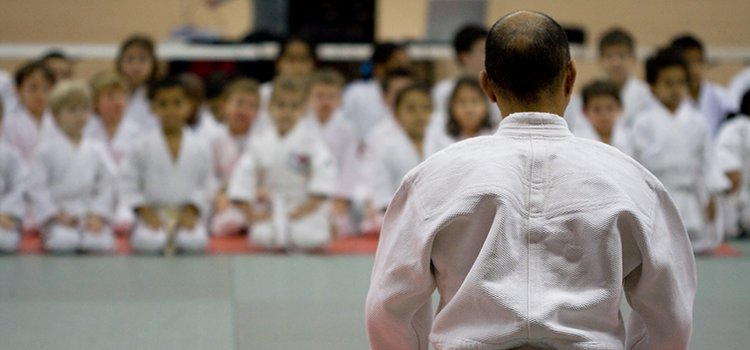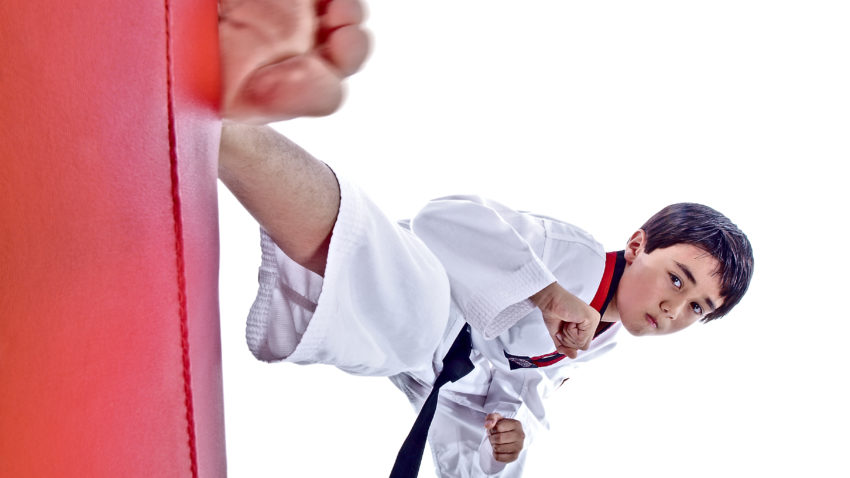Is martial arts right for your child? Here, experts answer common parent FAQs about choosing martial arts program styles, readiness, safety and more.
By Sarah Antrim
See Martial Arts Classes & Camps Near You > >
See Online Martial Arts Classes > >
What are some different types of kids martial arts classes?
There are hundreds of styles of martial arts and mixed martial arts to choose from. Mixed martial arts (MMA) doesn’t always mean dangerous cage fighting, either; it simply means that the style being taught includes two or more styles of martial arts. Some programs called mixed martial arts, karate, or tae kwon do include learning to punch and/or kick as methods of self defense. Kung fu is one of the oldest martial arts and focuses on strong blocks to prevent being struck. Others, such as aikido, focus on using the opponent’s strength and momentum to prevent them from harming you. Some include wrestling, and others focus mainly on kicks (such as tae kwon do). Some also train students in the use of traditional weapons, such as a bo staff or nunchakus, which are those two short sticks joined by cord that you’ll see in Bruce Lee videos. Many also focus on solo routines called kata, in which students practice a series of moves with an imagined opponent.
Regardless of the methods of self-defense taught, many traditional martial arts programs also teach philosophy, character, and behavior. They often emphasize humility and respect for all people as part of their curriculum.
How do I know which style of martial arts to choose for my child?
It depends on the type of personality of your child. Judo involves more throws, joint locks, and pinning opponents to the ground. If your child isn’t a fan of physical contact or tight spaces, this is probably not the best choice for them. Karate and Tae Kwon Do both focus on a variety of self-defense exercises involving striking and blocking techniques. Generally, karate is more focused on hand-to-hand techniques, while tae kwon do focuses on techniques using the legs. Mixed martial arts programs may include both of these, as well as others. There may even be kickboxing classes in which kids don’t spar (or fight) at all, but simply hit a heavy bag or padded shield.
The best way to find what you child might like is to watch classes at a few different types of studios. Be sure you watch students who are the age of your child and are beginners, so your child won’t feel overwhelmed or intimidated (which can happen if they observe advanced or older students). Also talk to the instructors of programs you like. Their approach and philosophy may wind up being the biggest factor in helping you and your child make a decision.
Remember, though, if the first program isn’t a good fit, there are plenty of others. Sometimes you only realize what you like after trying something you don’t! If your child does not enjoy or adjust to the program after a month or two, you can shop around for a different program.
How do I know if my child is ready for martial arts classes?
Most classes recommend that kids start around 8 to 10 years old, but young exposure is never a bad idea. Many schools also offer preschool or kids’ beginner classes, which get them moving, jumping rope, kicking a shield or the air, and learning how to focus and listen. Typically, the school you choose will tell you what age level they recommend, and many will also evaluate your child privately or during a sample (often free) class so they can tell you if your child is ready and which class would be the best fit for them.
What sort of safety concerns should I be aware of?
Of course there is always a chance that a child may get injured in any type of sport. However, some techniques learned in martial arts may help them fend off an attack or otherwise protect themselves later in life. For instance, some schools teach how to fall and roll so if you fall down (whether you’re pushed or you trip), you’re less likely to be injured.
Some schools offer little to no contact. Others have kids spar (fight) while wearing mouth guards, shin guards, helmets, padded gloves, and other protective gear. Mats on the floors prevent a hard impact if kids fall.
The most common injuries in the martial arts, according to HealthyChildren.org, are scrapes and bruises! Older kids may experience sprains or strains and finger or toe injuries — mainly due to improper technique. Also be wary of concussions, which can occur if kids strike their heads or are struck in the head. Whether your child engages in martial arts, soccer, football, or another sport, it’s a good idea to learn the signs of concussion and get your child checked by a doctor any time you suspect he or she has one.
See a List of Martial Arts Classes & Camps Near You > >
How long is a kids martial arts class?
Most classes tend to be 30 to 60 minutes in length. Class times for preschoolers may be just 30 minutes, while teens may train for over an hour. Other schools may have every class lasting 30 minutes. It just depends on the school. Ask your prospective school for a schedule so you’ll know how long classes are and how often they have classes (and when) for your child’s age/ability.
It is usually recommended that beginners practice 2 to 3 times a week, though preschool programs may meet just once a week. More advanced students will likely practice 3 or more times per week, especially if they are looking to advance to a higher level.
Where can I find a class for my child?
ActivityHero takes the guesswork out of finding the right martial arts class for your child.
You can browse by location, age, or date, and even look for options that suit your budget or provide extended care and other special programs such as summer camps or movie nights.
Find top-rated martial arts camps and classes with top-rated instructors.

